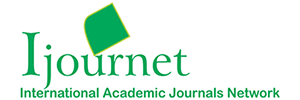
|
|
|
(216.73.216.120)
|
|
Users online: 9324
|
|

|
|
|
|
|
Ijournet
|
|
|
|
|
|
|
Author Guidelines
General Guidelines
Submitted manuscripts should contain original and unpublished work and must not have been concurrently submitted to other publishers. While the paper may draw on existing work, it should be materially different from any published document. This material difference may include significant updating, new analysis, or interpretation of previous work.
Article structure
Subdivision - numbered sections
Divide your article into clearly defined and numbered sections. Subsections should be numbered 1.1 (then 1.1.1, 1.1.2, ...), 1.2, etc. (the abstract is not included in section numbering). Use this numbering also for internal cross-referencing: do not just refer to "the text". Any subsection may be given a brief heading. Each heading should appear on its own separate line Introduction
State the objectives of the work and provide an adequate background, avoiding a detailed literature survey or a summary of the results. Material and methods
Provide sufficient detail to allow the work to be reproduced. Methods already published should be indicated by a reference: only relevant modifications should be described. Theory/calculation
A Theory section should extend, not repeat, the background to the article already dealt with in the Introduction and lay the foundation for further work. In contrast, a Calculation section represents a practical development from a theoretical basis. Results
Results should be clear and concise. Discussion
This should explore the significance of the results of the work, not repeat them. A combined Results and Discussion section is often appropriate. Avoid extensive citations and discussion of published literature. Conclusions
The main conclusions of the study may be presented in a short Conclusions section, which may stand alone or form a subsection of a Discussion or Results and Discussion section. Vitae
Include in the manuscript a short (maximum 100 words) biography of each author. Essential title page information
Title. Concise and informative. Titles are often used in information-retrieval systems. Avoid abbreviations and formulae where possible. Author names and affiliations. Where the family name may be ambiguous (e.g., a double name), please indicate this clearly. Present the authors' affiliation addresses (where the actual work was done) below the names. Indicate all affiliations with a lower-case superscript letter immediately after the author's name and in front of the appropriate address. Provide the full postal address of each affiliation, including the country name, and, if available, the e-mail address of each author. Corresponding author. Clearly indicate who will handle correspondence at all stages of refereeing and publication, also post-publication. Ensure that telephone and fax numbers (with country and area code) are provided in addition to the e-mail address and the complete postal address. Contact details must be kept up to date by the corresponding author. Abstract
A concise and factual abstract is required. The abstract should state briefly the purpose of the research, the principal results and major conclusions. An abstract is often presented separately from the article, so it must be able to stand alone. For this reason, References should be avoided, but if essential, then cite the author(s) and year(s). Also, non-standard or uncommon abbreviations should be avoided, but if essential they must be defined at their first mention in the abstract itself. References
List: References should be arranged first alphabetically and then further sorted chronologically if necessary.
Examples:
Reference to a journal publication:
Gandhi Varinder , The art of living,IJSN journal. 163, 51–59.
Reference to a book:
Strunk Jr., W., White, E.B., 1979. The Elements of Style, third ed. Macmillan, New York.
II Case studies
When submitting papers containing case studies of named companies and the data used it not in the public domain the author(s) must confirm that the companies concerned have given their permission for the material to be published and their name to be used. Alternatively, where case studies are reported anonymously the author(s) must confirm that they have permission to publish the material in this form. In all cases it is the responsibility of the author(s) to secure the necessary permissions from the companies concerned.
|
|
|
|
║ Site map
║
Privacy Policy ║ Copyright ║ Terms & Conditions ║

|
|
|
919,196,892 visitor(s) since 30th May, 2005.
|
|
All rights reserved. Site designed and maintained by DIVA ENTERPRISES PVT. LTD..
|
|
Note: Please use Internet Explorer (6.0 or above). Some functionalities may not work in other browsers.
|